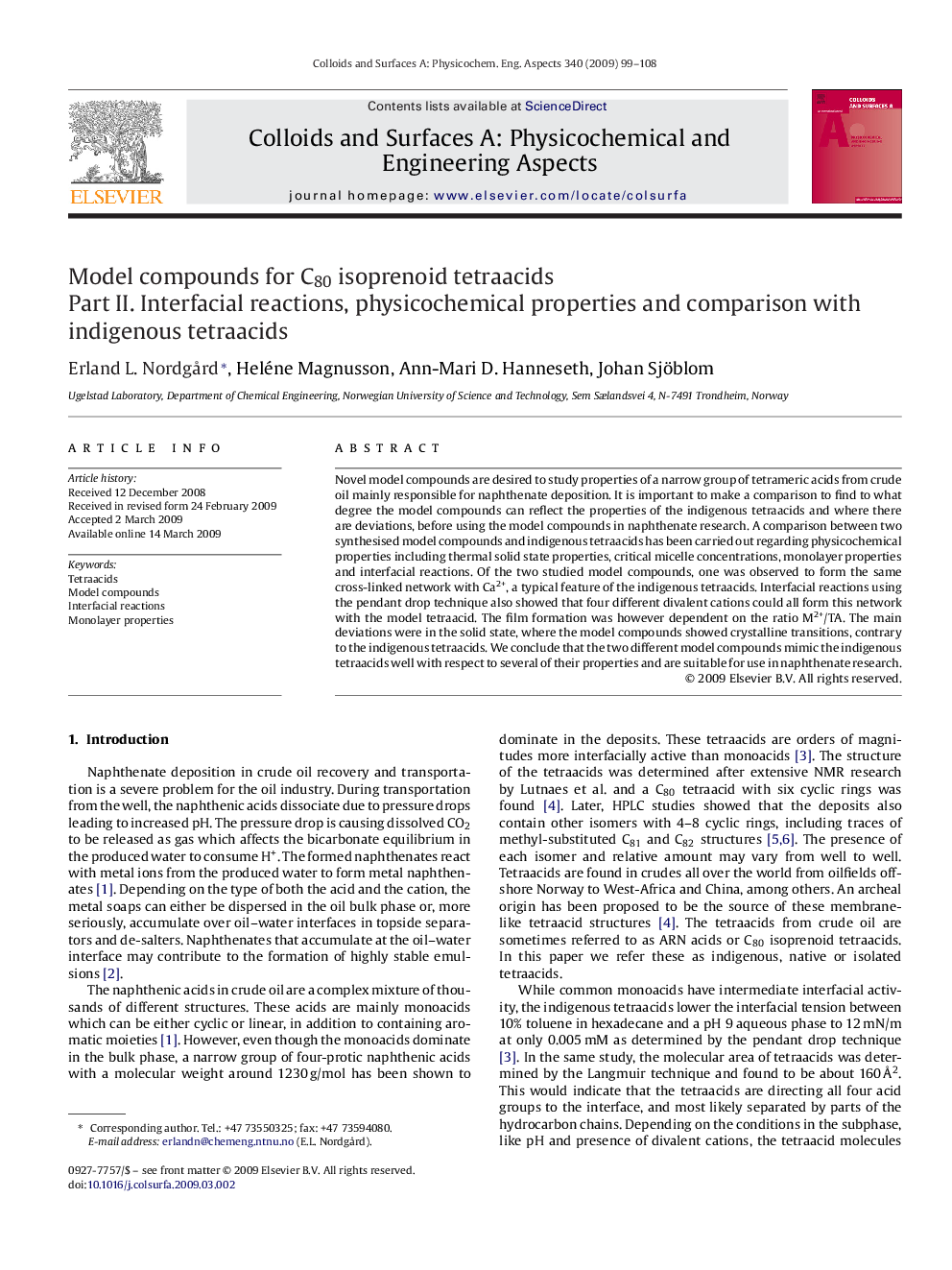| Article ID | Journal | Published Year | Pages | File Type |
|---|---|---|---|---|
| 596009 | Colloids and Surfaces A: Physicochemical and Engineering Aspects | 2009 | 10 Pages |
Abstract
Novel model compounds are desired to study properties of a narrow group of tetrameric acids from crude oil mainly responsible for naphthenate deposition. It is important to make a comparison to find to what degree the model compounds can reflect the properties of the indigenous tetraacids and where there are deviations, before using the model compounds in naphthenate research. A comparison between two synthesised model compounds and indigenous tetraacids has been carried out regarding physicochemical properties including thermal solid state properties, critical micelle concentrations, monolayer properties and interfacial reactions. Of the two studied model compounds, one was observed to form the same cross-linked network with Ca2+, a typical feature of the indigenous tetraacids. Interfacial reactions using the pendant drop technique also showed that four different divalent cations could all form this network with the model tetraacid. The film formation was however dependent on the ratio M2+/TA. The main deviations were in the solid state, where the model compounds showed crystalline transitions, contrary to the indigenous tetraacids. We conclude that the two different model compounds mimic the indigenous tetraacids well with respect to several of their properties and are suitable for use in naphthenate research.
Keywords
Related Topics
Physical Sciences and Engineering
Chemical Engineering
Colloid and Surface Chemistry
Authors
Erland L. NordgÃ¥rd, Heléne Magnusson, Ann-Mari D. Hanneseth, Johan Sjöblom,
